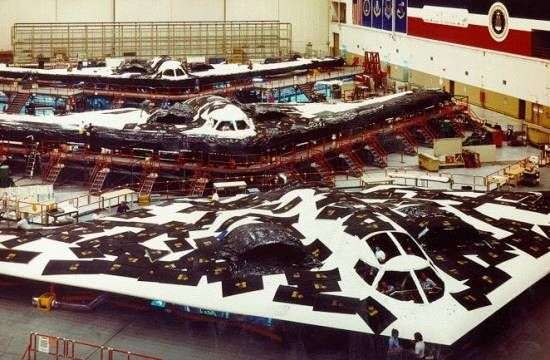|
||||||||||
|
|
||||||||||
|
||||||||||
|
|
||||||||||

These high manufacturing costs associated with both the B-2 and F-22, another stealth aircraft built to exacting specifications, help explain some of the cost-cutting measures adopted for the F-35 Joint Strike Fighter. This aircraft, and also the F-18E/F Super Hornet to a lesser extent, adopts what is popularly referred to as "affordable stealth" characteristics. What this term implies is that the design makes use of many advanced methods of reducing the detectability of the plane, but not to the same degree as the B-2 or F-22. The end result is a somewhat less stealthy aircraft than what it could be, but gives the military the most stealth for the least amount of money.
Another important factor to consider is that the B-2 was originally supposed to be produced in mass quantity, as a fleet of some 133 was initially envisioned by the Air Force. In light of this, Northrop built up an assembly line capable of supporting high-rate production for many years. This effort entailed hiring large numbers of workers and purchasing a significant amount of tooling and equipment for constructing specialized components. These types of costs are typically spread along the entire production run and are included in the final cost of any given production unit. Since the production run was cut from 133 down to about 20, that massive infrastructure cost had to be spread across a much smaller number of units thereby forcing the unit cost to skyrocket.
So while the B-2 would undoubtedly be expensive in any case, the fact that so few were actually built makes the
design much more specialized, and the cost benefits of mass production were largely lost.
- answer by Jeff Scott, 28 July 2002
Read More Articles:


|
Aircraft | Design | Ask Us | Shop | Search |

|
|
| About Us | Contact Us | Copyright © 1997-2023 | |||
|
|
|||